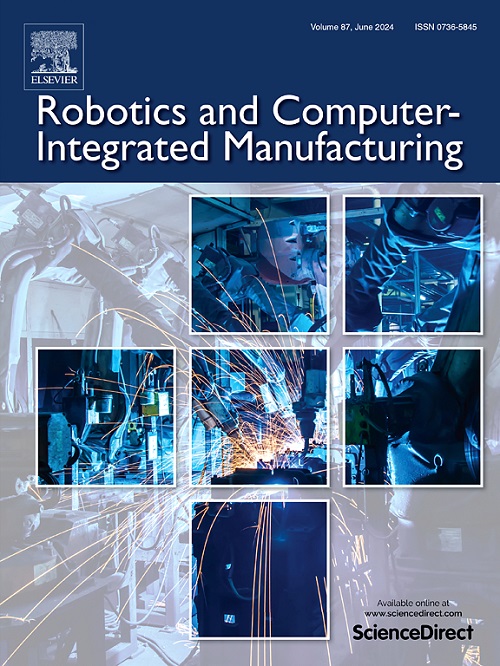基于跨模态变压器的智能工艺规划的自动化多模态工艺知识图谱构建
IF 11.4
1区 计算机科学
Q1 COMPUTER SCIENCE, INTERDISCIPLINARY APPLICATIONS
引用次数: 0
摘要
智能工艺规划是现代制造系统的关键,通过优化资源分配,提高加工精度,缩短生产周期,实现高效,精确和灵活的生产。知识图集成了多源异构数据来支持这一过程,然而传统的单模态方法阻碍了对多模态数据中复杂关系的探索,无法满足复杂零件规划的需求。本文研究了加工特征和工艺规划的基本单元,并介绍了一种基于跨模态变压器的多模态工艺知识图(MPKG)的自动构建方法。我们开发了MF36数据集,包含36个加工特征,包括3D模型、工程视图和描述性文本。结合llt - crf和PA-ViT模型的跨模态框架实现了多模态工艺知识的自动提取和融合,PA-ViT的集中注意力机制显著提高了加工特征识别的精度。实验证明了在基线上的优越性能,实体提取的F1得分为0.895,图像识别的F1得分为0.877。案例研究验证了该方法在精确工艺建议方面的可靠性,为推进智能工艺规划提供了新的见解。本文章由计算机程序翻译,如有差异,请以英文原文为准。
Automated multimodal process knowledge graph construction for intelligent process planning with Cross-Modal Transformers
Intelligent process planning is pivotal in modern manufacturing systems, enabling efficient, precise, and flexible production by optimizing resource allocation, enhancing machining accuracy, and shortening production cycles. Knowledge graphs integrate multi-source heterogeneous data to support this process, yet traditional single-modal approaches hinder the exploration of complex relationships in multimodal data, falling short of the needs for complex part planning. This paper examines machining features, the foundational units of process planning, and introduces an automatic construction method for a Multimodal Process Knowledge Graph (MPKG) tailored to intelligent process planning, powered by Cross-Modal Transformers. We developed the MF36 dataset, encompassing 36 machining features with 3D models, engineering views, and descriptive texts. A cross-modal framework integrating LERT-CRF and PA-ViT models automates the extraction and fusion of multimodal process knowledge, with PA-ViT’s pooling attention mechanism markedly boosting machining feature recognition accuracy. Experiments demonstrate superior performance over baselines, achieving F1 scores of 0.895 in entity extraction and 0.877 in image recognition. A case study validates the method’s reliability for precise process recommendations, providing fresh insights into advancing intelligent process planning.
求助全文
通过发布文献求助,成功后即可免费获取论文全文。
去求助
来源期刊
CiteScore
24.10
自引率
13.50%
发文量
160
审稿时长
50 days
期刊介绍:
The journal, Robotics and Computer-Integrated Manufacturing, focuses on sharing research applications that contribute to the development of new or enhanced robotics, manufacturing technologies, and innovative manufacturing strategies that are relevant to industry. Papers that combine theory and experimental validation are preferred, while review papers on current robotics and manufacturing issues are also considered. However, papers on traditional machining processes, modeling and simulation, supply chain management, and resource optimization are generally not within the scope of the journal, as there are more appropriate journals for these topics. Similarly, papers that are overly theoretical or mathematical will be directed to other suitable journals. The journal welcomes original papers in areas such as industrial robotics, human-robot collaboration in manufacturing, cloud-based manufacturing, cyber-physical production systems, big data analytics in manufacturing, smart mechatronics, machine learning, adaptive and sustainable manufacturing, and other fields involving unique manufacturing technologies.

 求助内容:
求助内容: 应助结果提醒方式:
应助结果提醒方式:


